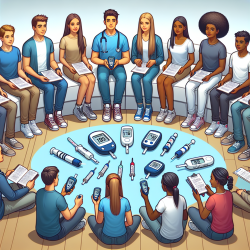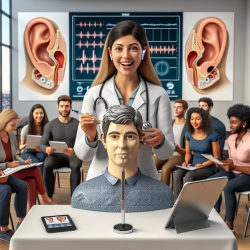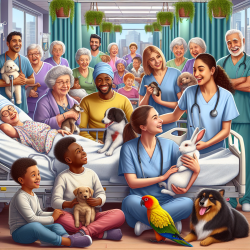Introduction
As practitioners dedicated to improving the health outcomes of children, we constantly seek innovative approaches to address the disparities in healthcare access and outcomes. A recent study titled "Applying the use of shared medical appointments (SMAs) to improve continuous glucose monitor (CGM) use, glycemic control, and quality of life in marginalized youth with type 1 diabetes" presents a promising model that can be integrated into our practice to enhance care for marginalized youth with Type 1 Diabetes (T1D).
Understanding the Study
The study focuses on the use of Shared Medical Appointments (SMAs) as a means to improve the uptake and sustained use of Continuous Glucose Monitors (CGMs) among marginalized youth with T1D. This cohort, often underrepresented in diabetes technology trials, faces significant barriers to accessing CGM technology, which is crucial for effective diabetes management. The study aims to assess the feasibility and acceptability of SMAs, focusing on publicly insured non-Hispanic Black (NHB) and Latinx youth aged 8-12 years with sub-optimal glycemic control.
Key Findings
The study reveals several key outcomes:
- Feasibility and Acceptability: SMAs are shown to be a feasible and acceptable model for delivering diabetes care to marginalized youth. High satisfaction rates among participants indicate the potential for broader application.
- Improved CGM Use: The SMA model significantly increases CGM uptake and sustained use, addressing a critical gap in diabetes management for this demographic.
- Enhanced Glycemic Control: Participants in the SMA model exhibit improved glycemic control, as evidenced by better CGM metrics and reduced HbA1c levels.
- Reduction in Diabetes Distress: SMAs provide a supportive community environment, reducing diabetes-related distress and improving quality of life.
Implications for Practitioners
For practitioners, the integration of SMAs into clinical practice offers several advantages:
- Holistic Care Approach: SMAs allow for a comprehensive approach to diabetes care, addressing both clinical and psychosocial needs.
- Peer Support: The group setting fosters peer support, enhancing self-efficacy and encouraging sustained engagement with diabetes management technologies.
- Focus on Health Equity: By targeting marginalized youth, SMAs contribute to reducing health disparities and promoting equitable access to diabetes care.
Encouraging Further Research
While the study provides a solid foundation, further research is essential to refine and expand the SMA model. Practitioners are encouraged to explore the following areas:
- Conduct larger-scale studies to validate the findings and explore the long-term impact of SMAs on health outcomes.
- Investigate the applicability of SMAs in other chronic conditions and diverse populations.
- Explore the integration of telehealth technologies to enhance the reach and accessibility of SMAs.
Conclusion
The application of SMAs in managing T1D among marginalized youth presents a promising avenue for improving health outcomes and promoting health equity. As practitioners, embracing such innovative models can significantly enhance our ability to deliver comprehensive, patient-centered care.
To read the original research paper, please follow this link: Applying the use of shared medical appointments (SMAs) to improve continuous glucose monitor (CGM) use, glycemic control, and quality of life in marginalized youth with type 1 diabetes: Study protocol for a pilot prospective cohort study.










